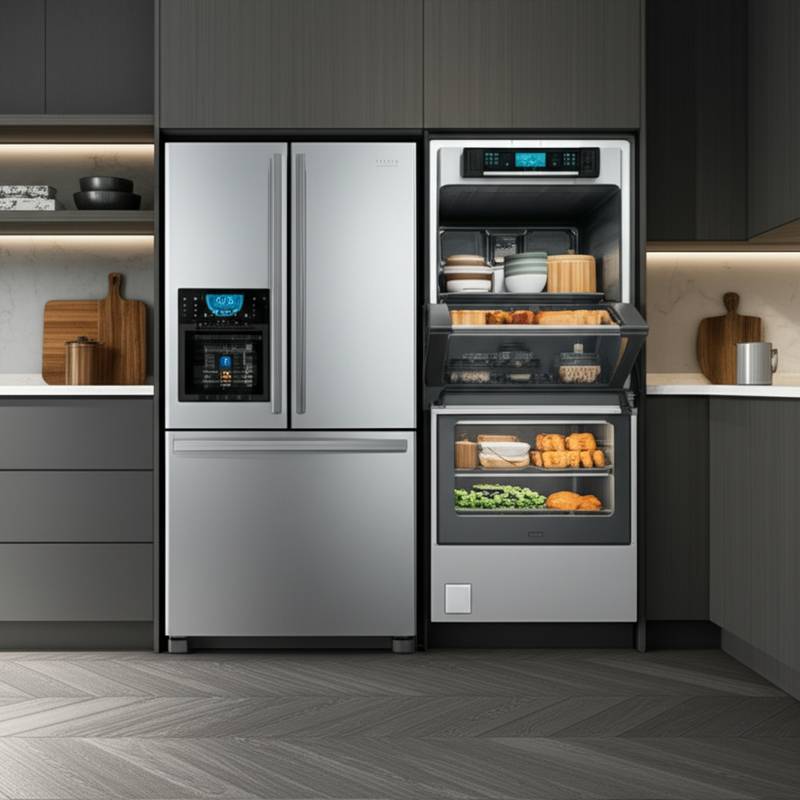Smart Appliances That Fix Themselves: The Rise of Built-In AI Repair
Smart homes evolve beyond voice commands and energy conservation. Intelligent appliances now diagnose issues and perform repairs independently. This development redefines maintenance, reliability, and device ownership in daily life.
Consider a washing machine that identifies a clog, resolves it, and notifies you of restored function. A refrigerator might sense temperature fluctuations, adjust sensors, and avert spoilage. These capabilities emerge from integrated artificial intelligence focused on self-diagnosis and self-repair.
Why Self-Repair Matters
Appliance failures frustrate homeowners with high costs, disruptions, and unnecessary waste. Research indicates many replacements stem from repair expenses or delays rather than irreparable damage. Self-repair technology counters this by minimizing waste and prolonging device life.
Consumers benefit from reduced service visits, predictable expenses, and greater investment security. Manufacturers gain enhanced loyalty and opportunities for sustainable design practices.
How Smart Self-Repair Works
Embedded intelligence drives these features. Sensors monitor operations continuously. Deviations trigger diagnostics, automatic adjustments, or user alerts.
A smart dishwasher, for instance, notices slow drainage and initiates a flush or suggests a cleaning cycle. A linked application informs you of the resolution. Machine learning algorithms, trained on failure patterns, adapt to your household's normal operations over time.
Trend 1: Predictive Maintenance at Home
Predictive maintenance transitions from factories to household settings. Appliances analyze sensor data and usage to forecast part wear and prompt preemptive action.
This approach avoids breakdowns and cuts costs by addressing minor issues early, such as replacing a single component instead of an entire unit. LG and Samsung models, for example, deliver app notifications for performance declines or cleaning needs. Ownership shifts to proactive management, with devices directing upkeep for optimal performance.
Trend 2: Modular Components for Easy Replacement
Self-repair often simplifies user intervention through modular designs. Key elements like filters, sensors, or heating units detach and replace without tools.
Smart ovens feature plug-and-play modules that swap in minutes. The device pinpoints the faulty part, automates ordering, and provides installation guidance via display or app. This method empowers users, curbs electronic waste, and extends appliance longevity while aligning with demands for performance and sustainability.
Trend 3: Cloud-Connected Diagnostics
Connectivity enables advanced support. For issues beyond local resolution, appliances transmit data to secure cloud servers for analysis by algorithms or experts.
Technicians arrive prepared with precise details, required parts, and timelines, streamlining repairs. Some systems resolve problems remotely, avoiding on-site visits altogether. This digital model accelerates fixes and minimizes household interruptions.
Trend 4: Energy and Resource Efficiency Through Self-Tuning
Beyond mechanics, self-repair enhances operational efficiency. Systems identify inefficiencies like buildup or sensor inaccuracies and apply corrections independently.
A smart water heater that consumes excess energy might execute a sediment-clearing cycle to regain efficiency. Such adjustments lower utility costs and environmental footprint. Cumulative effects foster a home that self-optimizes for steady comfort and resource conservation.
Trend 5: The Rise of Appliance-as-a-Service
Smarter, connected devices inspire subscription models. Users pay for ongoing performance, with providers managing updates, maintenance, and fixes remotely.
Self-diagnosing AI ensures constant monitoring and network communication. Problems trigger autonomous solutions or scheduled interventions before users detect them. This paradigm transforms ownership into a dynamic partnership with evolving, learning systems.
Real-World Examples Taking Shape
Brands pioneer these innovations. Whirlpool appliances conduct app-based health checks to identify clogged filters or suboptimal cycles. Bosch dishwashers employ sensors for automatic recalibration during water flow irregularities.
Robotic vacuums self-assess jammed brushes and modify suction for reliability. These implementations span categories from kitchen tools to climate systems. As technology advances, autonomous handling of complex repairs will further reduce downtime and expenses.
Challenges to Overcome
Full autonomy faces hurdles. Advanced sensors and processors increase production costs. Data privacy concerns arise from shared performance information.
Reliability demands trust in safe, accurate AI actions, with transparent explanations for users. Standardization ensures compatibility across brands in multi-device homes, facilitating seamless interactions.
Living with Self-Repairing Technology
Mindsets evolve as appliances become adaptive entities rather than fixed tools. Maintenance emerges as a collaborative effort informed by data and automation.
Picture a home that completes overnight adjustments: the dishwasher refreshes its filter, the refrigerator stabilizes temperatures, and the dryer clears vents. Daily routines proceed with assurance in peak appliance function.
Achieving Reliable Home Performance
Self-repairing appliances advance home intelligence through integrated AI, connectivity, and thoughtful design. They sustain themselves and enhance user lifestyles. Embrace these systems to experience reduced maintenance burdens and sustained efficiency in everyday living.
